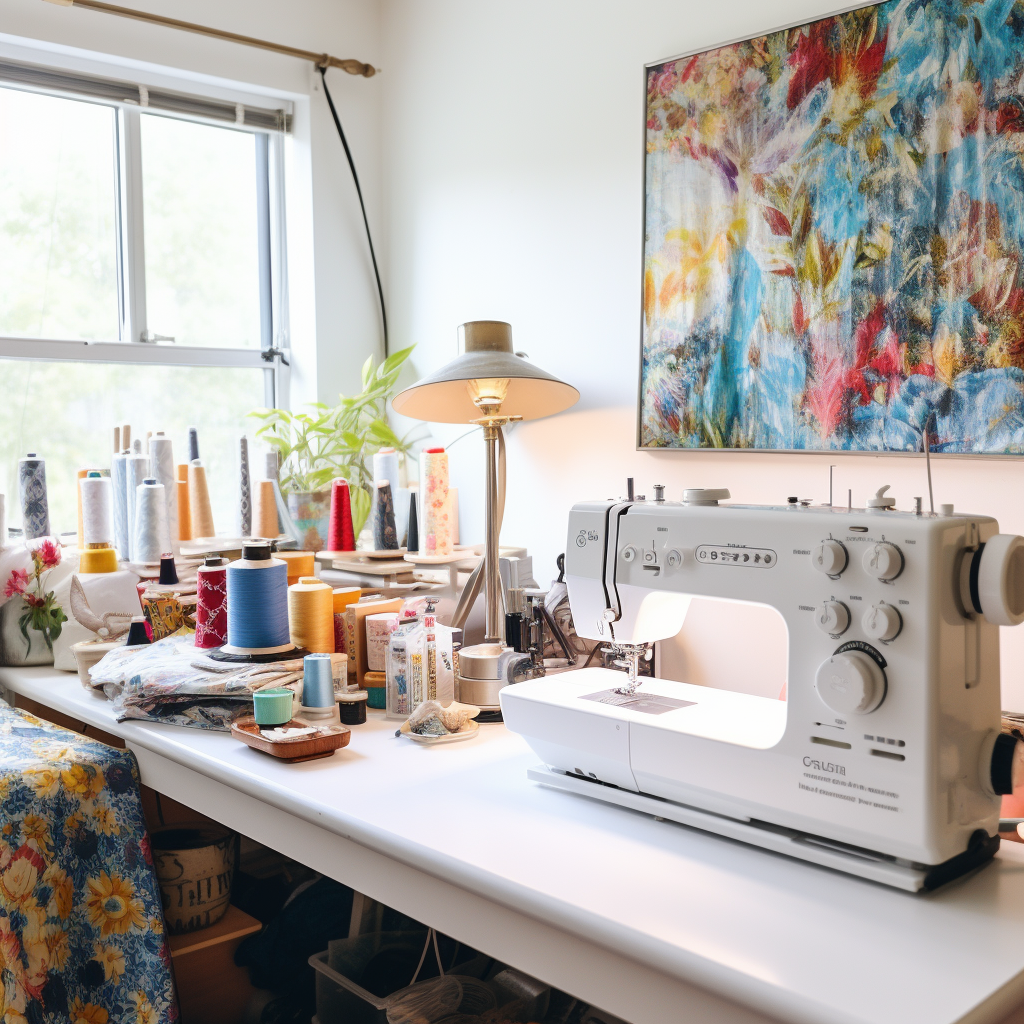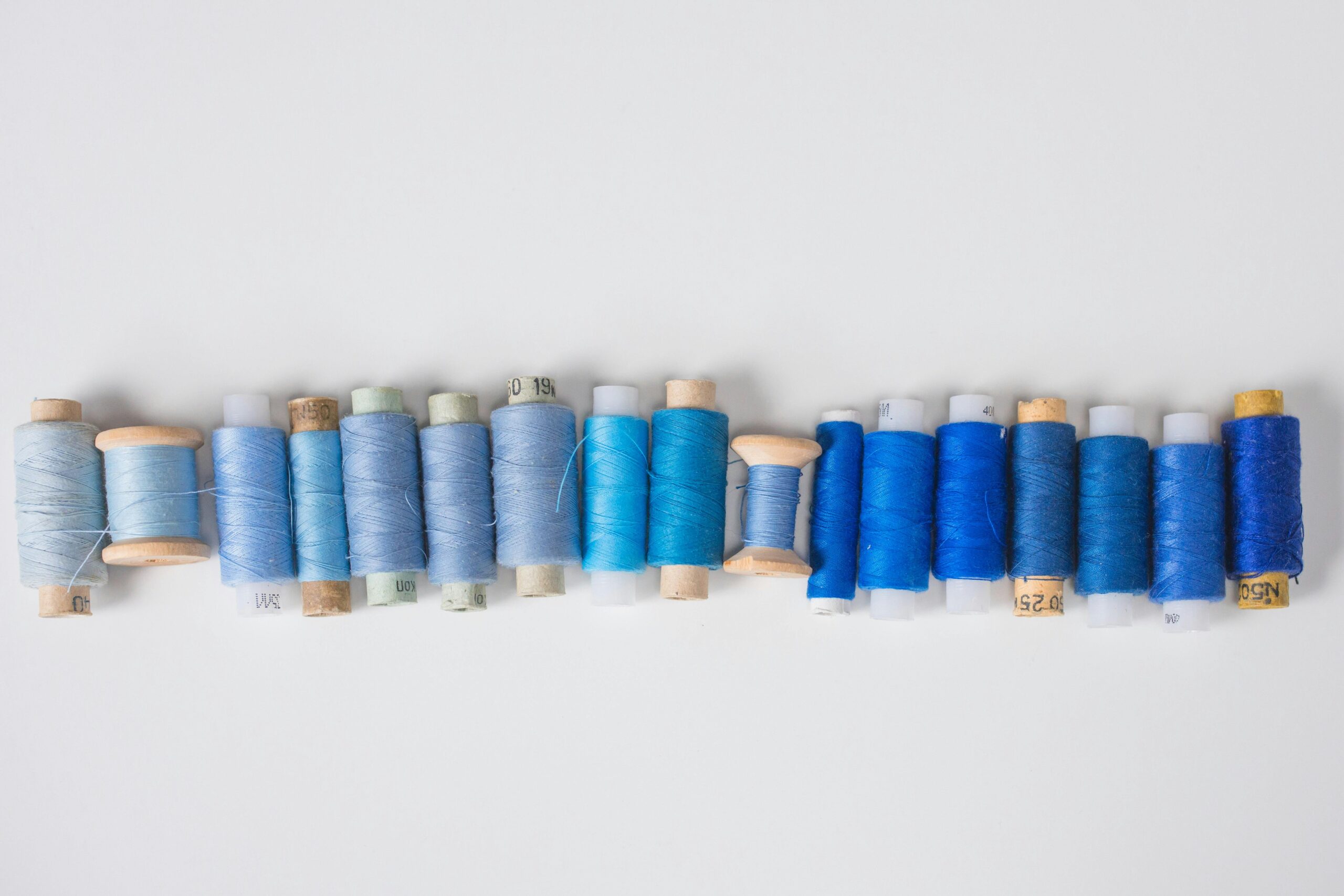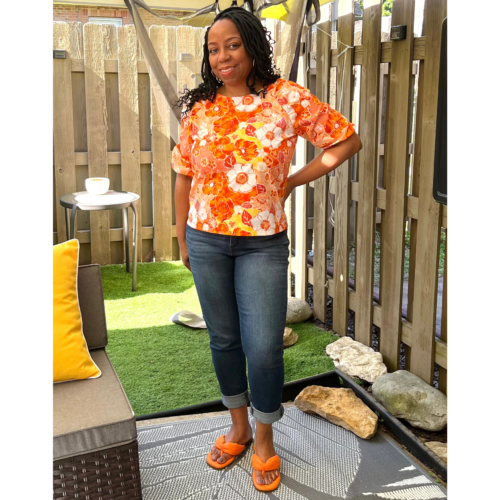
This post contains affiliate links in which commissions are earned when purchases are made from the links provided.
When it comes to sewing, everyone would love to have a large sewing room with all the space you can imagine, but that’s not always the case. The plus side to this is that you don’t have to have a large space to sew in. Before my daughter moved out and I was able to transform her room back into my sewing room, I was sewing from a corner in my bedroom. I will admit that sometimes it was a challenge, but I managed to make it work.
The main key that I learned from having a small sewing space was to leverage all of the space that you have. In this post, I am going to share with you some tips for organizing a small sewing space. You might be in the corner of a room in your home, or even utilizing a small, empty closet, I just want you to know that you can make it work for your sewing needs.
1. Evaluate Your Space For Your Sewing Table
This first tip is one that is so important, because it allows you to see exactly how much space you have to put the things that are most important. These are things like your sewing table, cabinet, shelves, and your chair. I suggest measuring out your space before deciding the type of table you can put there to sew on. You also want to remember that just because it’s a small sewing space, you should not compromise your comfort, so you want to make sure that the table and the chair that you use will not cause strain on you back nor your legs. When I was sewing in the corner of my bedroom, I purchased an electric standing desk to use as my sewing table and it also doubled as my cutting table. I just remove my sewing machine and my serger, place my cutting mat on top, and raise the desk so that I can cut my patterns out. Before I had this standing desk, I was sewing on top of my office desk that was not adjustable, and I would cut my patterns out on my bed or the floor. I still use this standing desk as my sewing table in my sewing room, because I can adjust the height to my level of comfort whether I’m sitting or standing. Now there are more traditional sewing/craft carts with storage that open and close to help with space issues as well if you would like to have something more compact.
If you want to see more in depth about how this electric standing desk operates as my sewing table, take a moment to watch this video:
2. Utilize Wall Space
Don’t underestimate the usefulness of wall space. Whether you have little wall space in your sewing area or a larger wall space, it is so important to utilize this wall space. This is where most of your most used tools can be stored and they will be at an arms reach. You just simply want to get some peg boards, I really like these peg board panels that you can put together in whatever design you need for your space. To be able to hang and store things, getting a peg board accessory set will allow you to hang and store tools like your scissors, seam rippers, rulers, marking tools, and so much more.
3. Lighting
Making sure your sewing space is well lit is not an option. Although sewing machines have their own light, you will need more light around you, as those sewing machine lights are just enough for you to see the stitches you are making. You need to see what you’re sewing, where you’re pinning, what the instructions say, and everything else that need to be seen while you’re working on your project. If you have a window close by, and you are sewing in the daytime, the daylight may be sufficient. However, if you are sewing at night and you don’t have a bright enough light, you are sure to make a mistake. There isn’t a special light needed, just more lighting, like a table lamp, a desk lamp, or even a ring light are great options.
4. Decorate Your Small Space
Just because you have a small sewing space, doesn’t mean you can’t personalize it. This is definitely where you can “make it yours” by adding some peel and stick wall paper, small decor like a plant or flowers, a pillow in your chair, a small diffuser, and/or whatever else you like.
5. Add A Cabinet And Shelves
Depending on the amount of space you have, adding a small cabinet where you can store notions, patterns, fabric, and any other necessities you might need, can help complete your small sewing space. I have an open back cube organizer that I used in my small space and now I use in my sewing room. It added a decorative feature to my bedroom at the time after I purchased cube storage organizer bins to put in each open space in the color that tied it in with my room decor.
Now, if adding a cabinet to your small sewing space is not possible, you might think about adding a hanging cabinet or floating shelves to your wall space that will give you more options for storing your items. If neither of these ideas are not suitable, you can always use an extra closet or another space in your home to store your sewing necessities.
6. Plastic Storage Containers
Along with cabinets and shelving, plastic storage containers comes in very handy. These containers might even be your only option for storing your things. They are usually stackable, and you can store them wherever you need to. You can also purchase them in different sizes, depending on what you need them for. I personally like the clear plastic storage containers because you can see what’s stored inside and this can save you time when you’re looking for things.
7. Sewing Chair
I mentioned having a chair at the beginning of the this post, but I want to reiterate how important it is to have a comfortable sewing chair that will support you ergonomically as well. There will be times when you are sitting and sewing for hours and believe me when I say that you want a good chair that will support your entire body. The last thing you want to feel after sewing is aches and pains, so it is very important that you have the right chair. In all honesty, a lot of these chairs will cost more but last a long time, however, there are inexpensive chairs that work well. You just have to test them out and see which one gives you the support that you need.
As you can see, organizing a small sewing space is possible as long as you scale and organize it according to the space that you have. One last tip is to not overload yourself with projects in your small sewing space. Having fabric, patterns, etc. thrown here and there can make your space look cluttered and even smaller, and this alone can lower your moral for sewing, so keep it neat! I do hope these tips have helped to give you some ideas for your small space and that you will use them to your liking. If you want to see what my space looked like years ago in the corner of my bedroom, take a look at this video below.


